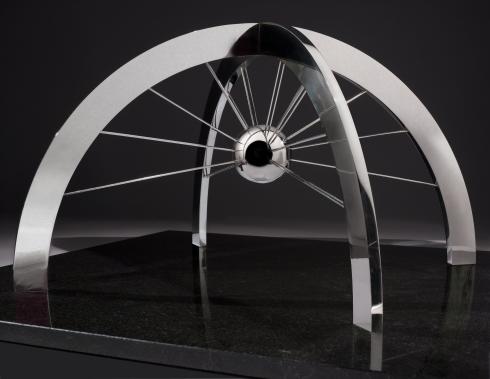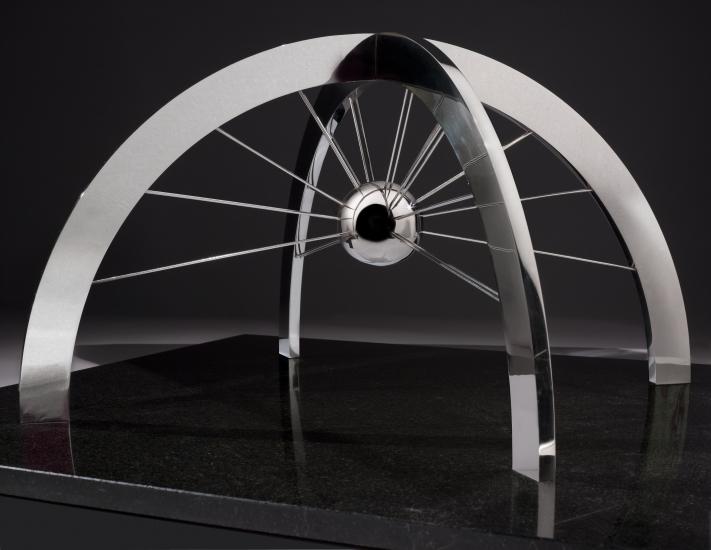
Media Inquiries
Public Inquiries
The 2012 Smithsonian’s National Air and Space Museum Trophy will be awarded in the Lifetime Achievement category to Burt Rutan and in the Current Achievement to the Cassini-Huygens Flight team. They will be presented their awards March 21 at a black-tie dinner in Washington, D.C.
"The winners of the 2012 Trophy Awards have challenged the established ways of thinking," said Gen. J.R. "Jack" Dailey, director of the museum. "Burt Rutan has inspired the aeronautical community to reach beyond the conventional for innovation and achievement; the Cassini-Huygens mission has changed our understanding of the Saturn system and contributed to our understanding of planetary systems' formation and evolution."
Established in 1985, the award recognizes outstanding achievements in the fields of aerospace science and technology and their history. As in past years, Trophy winners receive a miniature version of “The Web of Space,” a sculpture by artist John Safer.
2012 Trophy Award Winners and Categories
Rutan has designed and built some of the most exciting machines ever to fly. His revolutionary lightweight, durable and efficient air- and spacecraft have broken numerous world records, including the first nonstop flight around the world without refueling (Voyager) and first privately developed reusable sub-orbital spacecraft (SpaceShipOne). To date, five Rutan aircraft are in the museum’s collections. Rutan’s companies—Rutan Aircraft Factory and Scaled Composites—have produced an eclectic range of homebuilt, research, civilian and military aircraft that have changed construction and engineering, solved specific aeronautical problems and captured the imagination of the aerospace industry and the world.
Arriving at Saturn in 2004, Cassini has been chronicling Saturn and its satellites and rings. From characterizing Saturn’s atmosphere and radiation belt, to imaging new faint rings, to detecting methane-carved stream-like drainage channels and lakes on Titan, to imaging geysers erupting from the south polar region of Enceladus, the discoveries made by this mission continue at a fantastic pace. The Cassini-Huygens team has far exceeded the planned primary mission duration and objectives, taking maximum advantage of this invaluable asset. Further, by careful management of spacecraft resources, the mission may continue for years, thus allowing the Cassini-Huygens Flight Team to answer scientific questions far beyond those conceived at the mission’s onset.
More information about the National Air and Space Museum Trophy and a complete list of past winners are available at http://www.nasm.si.edu/research/aero/trophy/nasm.cfm.
The National Air and Space Museum building on the National Mall in Washington, D.C., is located at Sixth Street and Independence Avenue S.W. The museum’s Steven F. Udvar-Hazy Center is located in Chantilly, Va., near Washington Dulles International Airport. Both facilities are open daily from 10 a.m. until 5:30 p.m. (closed Dec. 25). Admission is free, but there is a $15 fee for parking at the Udvar-Hazy Center.





